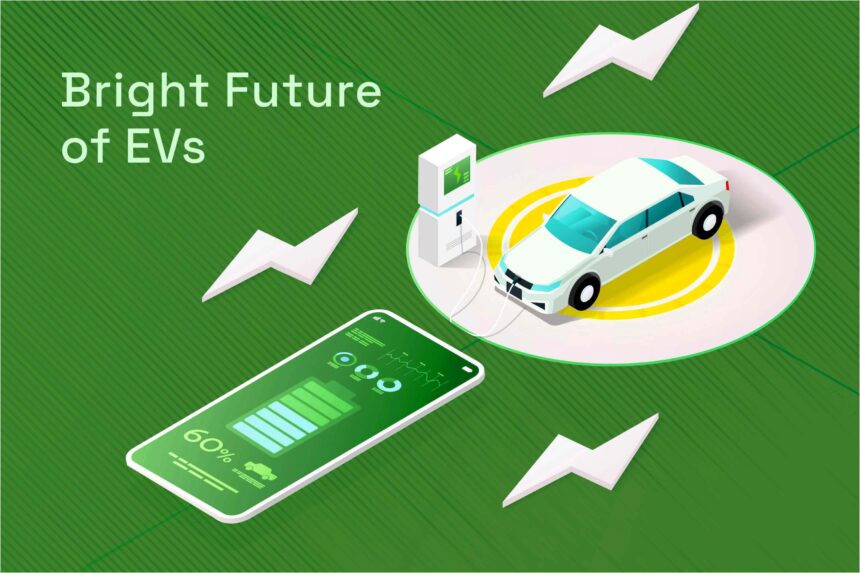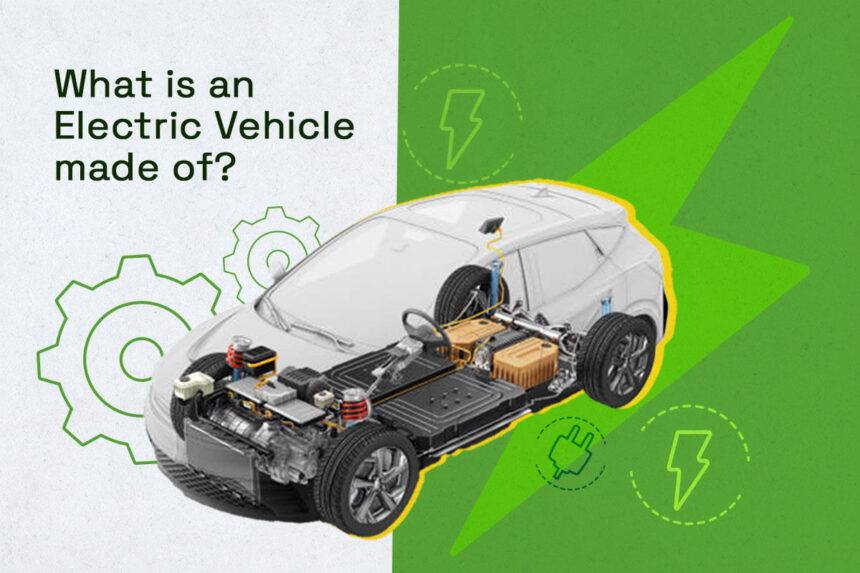Introduction
When vehicles use one or more motors for propulsion, they are called electric vehicles. The vehicles can be powered by a collector system with electricity from extravehicular sources, or they can also be charged autonomously by batteries. It can be powered by solar panels or when fuel is converted into electricity using fuel cells or generators. EVs include road and rail vehicles, surface and underwater vessels, and even electric aircraft and spacecraft. However, the diversity of electric vehicles is not limited to the aforementioned categories. There are other emerging technologies for road transport like connected vehicles, autonomous vehicles, and shared mobility. Along with these technologies, electric vehicles would contribute to the future vision of CASE (connected, autonomous, shared, electric) vehicles.
The Technology of Electric Vehicles
Electric vehicles have fewer moving parts and use little to no fossil fuel. Some electric vehicles used acid or nickel metal hydride batteries. However, the standard for electric vehicles is now considered to be lithium ion batteries. This is because they have greater longevity and an excellent ability to retain energy. Despite the increased efficiency, there are a few concerns and challenges to overcome. For example, fires and explosions were caused in Tesla S Model due to thermal runaway. After such undesirable experiences, there are increased efforts to improve the quality of batteries. Approximately it can cost approximately 7.80 pounds to fully charge a battery at home and can even be free in car public parks.
There are two types of electric vehicles: full-charge vehicles and plug-in hybrids.
Battery electric vehicles create less noise; they have no exhaust, spark plugs, clutches, or gears; and they don’t burn fossil fuels but rather use chargeable batteries. Battery Electric vehicles can be charged overnight at home, providing enough range for journeys. However, the range of batteries can be affected due to the nature of journeys, the charging speed, and the size of batteries. Range is one of the major concerns being addressed by the industry.
Plug-in hybrid vehicles are those that don’t solely rely on the batteries; they offer a mixture of batteries and fuel. Therefore, traveling long distances becomes more convenient because one can switch to the traditional fuel-driven power source rather than having to charge the batteries. The need for more maintenance, emissions, cost of gasoline, and noise are also the disadvantages of plug-in hybrid vehicles. Also, these vehicles have a smaller battery pack, which means a lesser range.
History of Electric Vehicles in India
In 1996, Scooter’s India Pvt Ltd invented the first electric vehicle as a three-wheeler and named it VIKRAM SAFA. Approximately 400 vehicles were manufactured and sold. In the 21st century when the concern over harmful pollutants being emitted into the atmosphere due to the fuel driven vehicles started to gain attention and conscious discussions followed, the interest in electric vehicles revived.
In 2000, an eighteen-seater electric bus was developed by BHEL. They became popular too. Around 200 vans were produced and run in Delhi. However, due to the highly priced batteries, which had a short life, these vehicles did not continue in the long run. Therefore, due to expensive batteries, low life, and short range, electric vehicles introduced in the 19th century did not continue in the market. However, they have been used for transportation and public transport, especially electric rail vehicles.
The exchangeable battery service was first proposed in 1896. In partnership with UK-based Ultra Motor, in 2007, Hero cycles launched a series of electric bikes. Over time, Electrotherm India, TVS, and Hero Electric also started to produce their own electric bikes. Etrio raised $3 million in funds to transform existing fuel-based vehicles into electric variants. This was a benchmark for efficient and eco-friendly transportation. The significant popularity of electric rickshaws dominated the market. In 2016–17, 5,00,000 e-rickshaws were sold in India.
A scheme called FAME (Faster Adoption and Manufacturing of Electric and Hybrid Vehicles in India) is being introduced, in which a subsidy would be given to 11 cities for launching electric buses, taxis, and e-rickshaws. The targeted cities include Ahmedabad, Jaipur, Bengaluru, Mumbai, Delhi, Lucknow, Hyderabad, Indore, and Kolkata, plus two cities—Jammu and Guwahati—in a particular category.
The Future of Electric Vehicles in India
It is believed that the future of electric vehicles in India is phenomenal, and there are certain specific reasons for it. They are as follows:
By switching to electronic vehicles, India would reduce carbon emissions by one giga tonne by 2030, therefore ensuring that the present and future generations will be healthier.
The Indian government is providing hefty tax rebates to people purchasing electric vehicles. However, buying and driving electric vehicles is going to be more affordable for people, so more people will feel encouraged to shift to electric vehicles.
The charging mode has become easier. Electric vehicles are coming with fast chargers, which would ensure the vehicles are charged while being parked at home. Additionally, government is aiding the private players to enter the market and enabling them to establish pop-up electric vehicle charging stations.
Electric vehicles are enjoyable to drive because one can get rid of the noise and vibrations. Additionally, they are gearless and come with uncomplicated controls. Therefore, more people would be attracted to driving electric vehicles.
Conclusion
For a country that has witnessed a vivid history of the evolution of electric vehicles and has been highly in favor of them, it is inevitable that the future of electric vehicles in India is bright!







